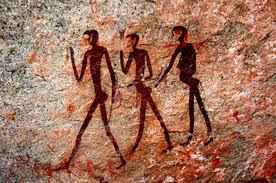NFL and Marketing Futures.
The NFL is improving the in-stadium game experience by creating WIFI enabled smartphone applications that provide game watchers with information, audio and video heretofore only available to the TV watching audience. Got smartphone? The second wave of these apps will provide an even greater level of entertainment and analysis than is available through the TV — but let’s not get ahead of ourselves. The business problem some teams are facing is that seat sales are down 3% since 2007 and TV viewership is up. With replays, color analysis and hi-def, the on-coach experience is excellent and free. The in-stadium experience needs to get better…and it is, thanks to smartphones.
Consumer Goods Marketers
As consumer marketers put on their thinking caps and realize they need to improve the in-store shopping experience to better compete with online shopping, new worlds of smartphone applications will turn up. Think aisle check-ins at the local Stop & Shop a la FourSquare, or pre-loaded Consumer Reports write-ups at your local car dealership. How about GPS-enabled restaurant reviews by cuisine or an olive oil rating app at the local specialty food store? Help, I can’t stop!
Thanks NFL for being so forward in your thinking. Peace!







